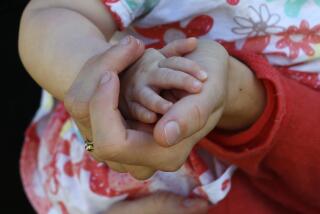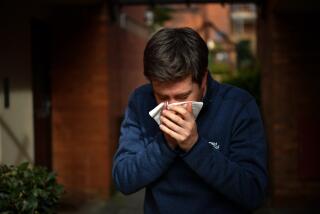Employers who don’t offer paid sick leave are making flu season worse, hurting their bottom line

This winter’s flu season is a nasty one, with flu-related hospitalization rates outpacing anything seen in recent years, according to the Centers for Disease Control and Prevention.
This year’s vaccine is less effective against the strain of virus making the rounds. But there’s another factor that gives aggressive viruses like this one an extra punch in the United States: lack of access to paid sick time.
According to the Bureau of Labor Statistics, 28% of civilian workers — roughly 45 million individuals — have no access to paid sick leave.
When these workers get ill, they have a choice to make: go to work sick, or stay home and forgo pay. Lack of paid sick time is concentrated among the lowest-income employees, which explains why millions of workers opt for the former.
Multiple studies have shown that workers without access to paid sick days are more likely to go to work sick than those with it.
That’s a problem not just for those workers, who are literally sacrificing their health for a day’s wage, but also for their fellow workers and commuters exposed to their illness.
In recent years, a number of studies have attempted to quantify the extent to which sick employees are making influenza outbreaks worse. In 2010, a policy brief published by the Institute for Women’s Policy Research used data from the CDC and the Bureau of Labor Statistics to estimate that during the virulent 2009 flu season, about 8 million American workers went to work while infected with the influenza virus, causing an additional 7 million people to get sick.
Rates of “presenteeism” — showing up to work sick — were much lower in the public sector, where paid sick leave is more common than in the private sector.
“The public sector results suggest that the vast majority of employees infected with H1N1 would have stayed at home if that were a viable option,” the report concluded. “Absent paid sick days legislation in the U.S., many private sector employees faced little choice and attended work while sick, thereby infecting others.”
Another paper, published in 2016, paired Google’s data on influenza trends with information on sick leave mandates (paid and unpaid) implemented in a number of cities and states in the 2000s. It found that the introduction of sick leave mandates reduced the incidence of influenza-like illnesses by about 6% across the total population.
The implication is that leave policies are good not just for individual workers but also for everyone they may come in contact with.
“More employees with a contagious disease will call in sick and stay at home when they gain access to sick leave insurance,” that report concluded.
Last year, a paper published in PLOS One found that access to paid sick leave made employees significantly more likely to stay home when dealing with an influenza-like illness. “We conclude that access to [paid sick days] is likely to reduce the spread of disease in workplaces by increasing the rate at which sick employees stay home from work, and reduce the economic burden of staying home on minorities, women, and families,” that report concluded.
Although employers who don’t currently offer paid sick leave might balk at the costs, a substantial body of research suggests paid sick days might, in effect, pay for themselves by reducing overall rates of absenteeism.
A study published last year by researchers at the CDC found that “providing paid sick leave to workers who lack it might help decrease the number of workdays lost due to flu and similar illnesses by nearly 4 [million] to 11 million per year,” resulting in an overall cost savings of $1 billion to $2 billion.
The CDC’s overall guidance on what to do if you think you have the flu is unequivocal: Stay home while you’re sick, until at least 24 hours after your fever breaks. Implementing a nationwide paid sick leave policy — like nearly every other country in the wealthy world — would help sick workers do exactly that.
Ingraham writes for the Washington Post.






